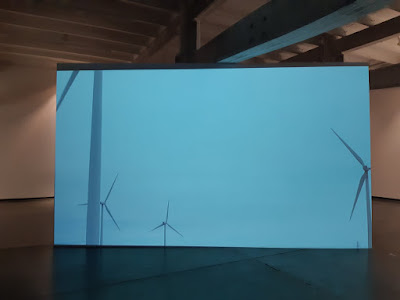In the past few months, I have probably upset so many people around me, close, not so close, for reasons known or unknown, for aspects valid or invalid. My silences, utterances, all have failed me, all worked against my intentions. Neither did my actions bring me peace, nor did they resolve my dissatisfactions. Everything seemed to entangle more than before with every succeeding day. One problem resolved into another. How does one make sense of the situation, I don't know?
I shouldn't get into describing these events. The blog may have no longer remained a space for speaking aloud. I had always thought of it as a personal diary, but what a fallacy it was! Someone has said very aptly, that we all write to be read by someone. I wrote primarily to record, out of instinct, for myself, as much to be read, of course by someone. To be sure, this "someone" was an evolving version of the self, more than any other. Anyway, social media's publicness often leads you to strange forms of repression through self censorship, and as I write this, I am already worried of so many (mis) interpretations it might pose for some. But one is not ill-intended, as often construed of products and producers of social media when they go against an opinion or person. I don't even know how, and if I must begin to even elaborate it, because it will complicate so many problem-ridden affairs that pushed me to an outpour.
These days, I wonder how, if I were to, begin to resolve problems one by one; set equations straight again, rejoin cracking ends, crease crumpled edges, rework relationships...the imaginary dialogues roll in the head, and suddenly in a flash of negativity, things fall apart. I laugh at myself to the extent of disarray that I myself seem to have created, through my own distancing. But this moving away from things, was perhaps only to come closer to myself. Have I been so wrong that I can not enter myself even in bypassing the other? Or had I gotten too close to someone to make it too difficult for them to lose me? And could this conscious process of movement towards the self be labelled as "ego"?
I wondered for a long time on what is identity without ego, and how does one claim agency without having a sense of identity? Often, ego is seen in a pejorative way. But can a historically identity-striken person give up the pursuit of self definition when he/she achieves enough clarity to discern the feeling of right from wrong? How does one resist power that possibly could overrun certain unexplored dimensions of a productive ego? Such questions still seek their root, their location, for it is the place which will help address the means through which reconciliation may be sought out. Which hidden repressions have played out in the past to ruffle so much, so rapidly? Are these just circumstances that have conspired a difficult environment? How can so many forces and energies go wrong at the same time that they seem to make a world so disharmonious?
How would things change? Does one need to work on them, or wait for time to heal? If only I could foresee, I could make an intervention. I am tied into the existing circumstantial pattern that holds me back from taking new steps towards repair. What if situations worsen in my intervention, what if experiments fail, what if I lose more? Perhaps these need psychological attention? I remain unsure.




























































